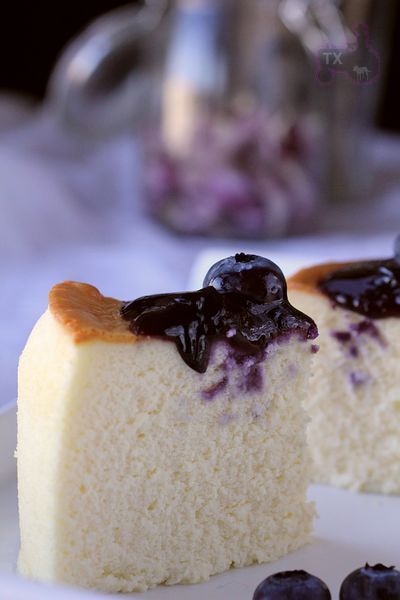Sending this to Yeastspotting.
Click here for my blog index.
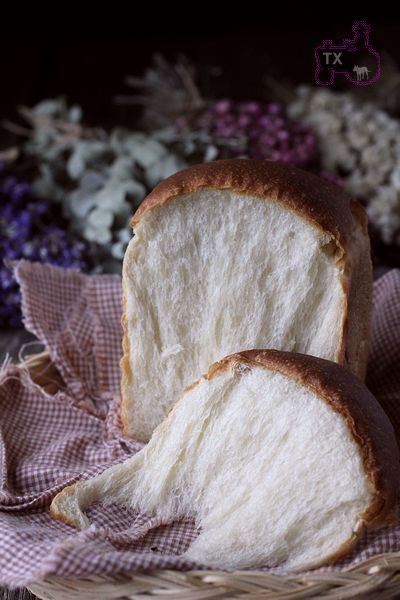
Another incredibly soft and shreddy sandwich bread, this time with cream cheese as the enriching ingredient.
Note: 19% of the flour is in levain
Note: total flour is 250g, fit my Chinese small-ish pullman pan. For 8X4 US loaf tin, I suggest to use about 270g of total flour. For KAF 13X4X4 pullman pan, I would suggest using about 430g of total flour.
- levain
starter (100%), 13g
water, 22g
bread flour, 41g
1. Mix and let fermentation at room temp (73F) for 12 hours.
- Final Dough
bread flour, 203g
butter, 13g (softened)
egg, 50g
sugar, 25g
salt, 3g
cream cheese, 50g
water, 100g
levain, all
1. Mix everything until stage 3 of windowpane (-30sec), see this post for details.
2. Rise at room temp for 4 hours until double
3. Takeout, divide into 3 portions, round, rest for 20 min. shape as instructed here for sandwich loaf.
4. rise at room temp for about 4-6 hours. For my pullman pan, it should be about 80% full; for US 8x4inch pan, it should be about one inch above the edge. The dough would have tripled by then, if it can't, your kneading is not enough or over.
5. bake at 375F for 20min, then 350 for 25min.
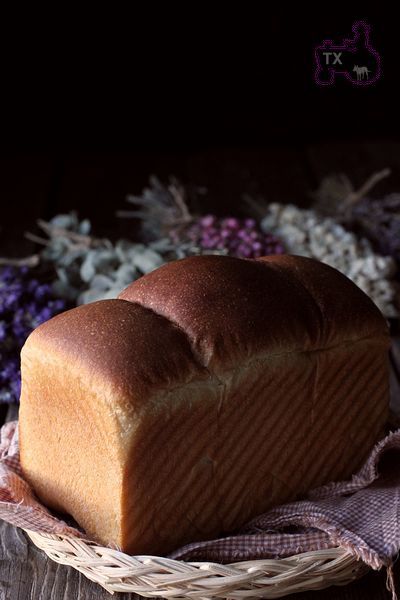
Very very soft. With cream cheese in the ingredients, the dough is especially sticky. It's tricky to knead, one minute it's still sticking to everything, the next minute it's overkneaded. You really need to watch the dough for optimal developement.
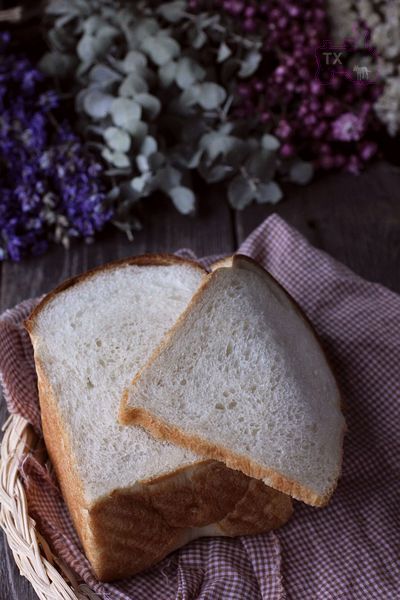
Comparing to other soft sandwich breads made with cream, or a lot of butter (this one has minimal amount of butter), this cream cheese loaf is as soft in texture (if not more), but with a cleaner taste. I have made it a few times, sometimes with egg whites only (leftover from pastry making), which yields to equally soft breads, but an even lighter/cleaner flavor.
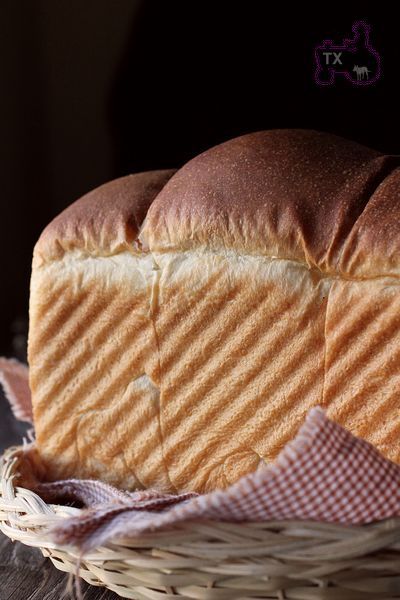
I made Asian Pineapple buns with the exact same dough.
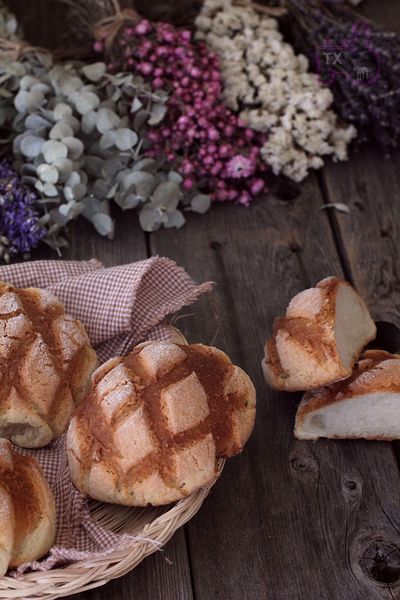
-Topping
butter, 80g, softened
sugar, 80g
egg, 80g
cake flour, 200g
baking powder, 2g
1. Beat softened butter hand soften until light and fluffy
2. Add egg little by little, mix until absorbed
3. Add shifted cake flour and baking powder, mix until blended
4. Put in fridge for 30min

To make the buns:
1. Divide and round the dough into 50g pieces
2. Divide the topping dough into 40-50g pieces (more or less according to how large your buns would grow, which is related to how well you knead the dough), flaten into large disks. It's easier to operate if the topping is cold.
3. Put topping disk on top of dough ball, push topping down until it "almost" completely wrap the dough, except for a small empty patch at the bottom. Use bench knife to cut patterns into topping, dip the top in sugar (or spread sugar on top)
4. Proof at room temp for about 4-6 hours.
5. Bake at 375F for about 20min.

The light taste of cream cheese dough matches well with the sweet topping. For those who are familiar with Mexican Conchas, this topping is similar but different. Less sweet than conchas, and fluffier and more crumbly.
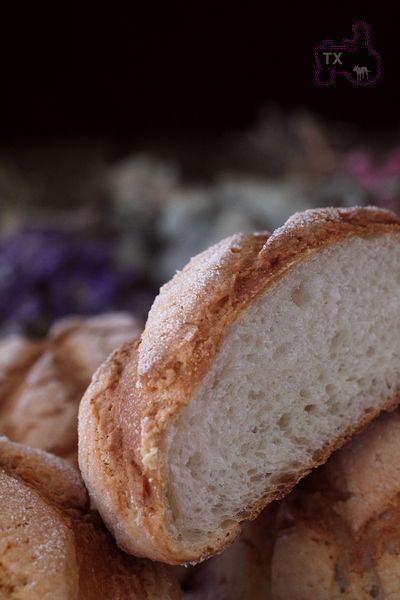
Since we are talking about cream cheese, I highly recommend a Japanese Souffle cheesecake I make recently.
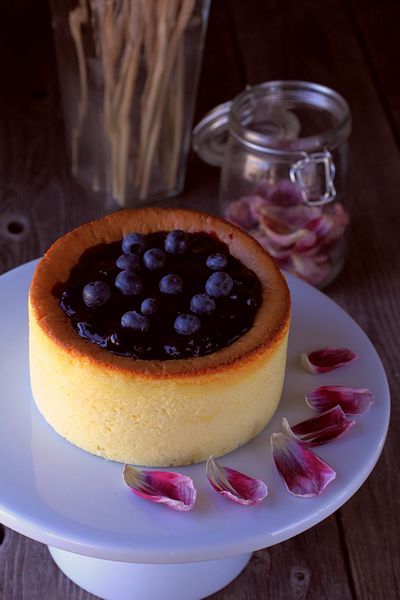
cream cheese, 300g, soften
butter, 45g, melted
egg yolk, 57g
sugar 20g
corn starch, 11g
milk, 150g
egg whites, 95g, put in freezer for a bit until a little ice forms around the edge
sugar, 55g
1. Mix cream cheese and butter until even
2. Mix yolk and 20g of sugar until even, mix in shifted corn starch until even
3. Heat milk until almost boiled, slowly add into 2, mixing at the same time. Put back onto stovestop, quickly mix by hand until thicken (<1min in my case, this is just like making custard sauce)
4. Pour 3 into 1, mix until even, cover and put aside
5. Beat egg whites until foamy, slowly add 55g of sugar, beat until soft peak (cold whites are harder to beat to peak, however, when soft peak is formed, the texture is smoother, and it's more stable)
6. Add 1/4 of beaten whites into 4, fold, add the rest of whites, fold until even.
7. Take a springform pan or a pan with removable bottom (mine is a 6inch round pan with removable bottom, 3inch tall), wrap the bottom with foil so that water wont' get in during baking (it needs a water bath). Oil and flour the pan.
8. Pour batter into pan, it should be "almost" even to the rim if your pan volume is the same as mine. Bake in wather bath at 325C for about 1hr.
9. Turn off oven and leave the cake inside for 1 hour. Take out and cool in pan, wrap, still in pan, and put in fridge over night. Unmold next day.
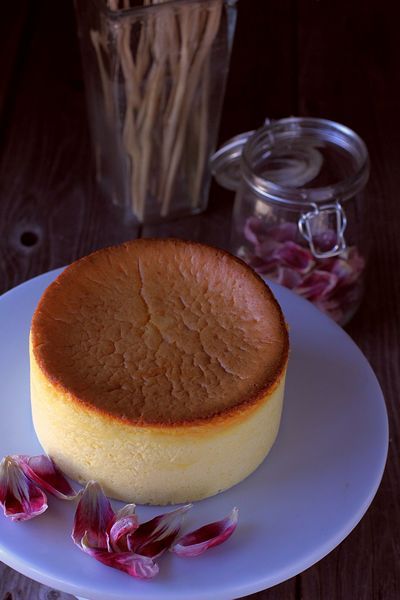
Therea are several tips for this cake:
1) Egg whites has to be beaten to soft peak. If it's beaten to hard peak, the cake would split during baking because it will expand too quickly/much. If it's not beaten enough, cake wont be light.
2) Folding with the correct technique is important. Minimal air should be lost during folding, but ingredients need to be blended evenly.
3) Cheesecake baking is all about even low temperature, which is why water bath is used. Put the cake pan in a larger pan, pour water to reach at least halfway (that's why it's important to wrap the bottom of the pan with foil especially if the pan bottom is removable). Keep the baking temp low so that the cake can grow evenly and slowly to avoid cracks. Observing this cake, it will grow to be almost 1 inch above the rim, then slowly go back to be slightly higher than the rim, which means you can't use a pan smaller than the one I am using. I like a tall cake, that's why I am using a smaller but very tall pan (3 inch sides, 6inch diameter).
4) Must bake the cake long enough. If it's underbaked, it WILL collapse and the crumb won't be light and even.
5) Original recipe says to put parchment paper around the pan for easy unmolding. However, I find oil/flour is enough, and that yields a much smoother sides.
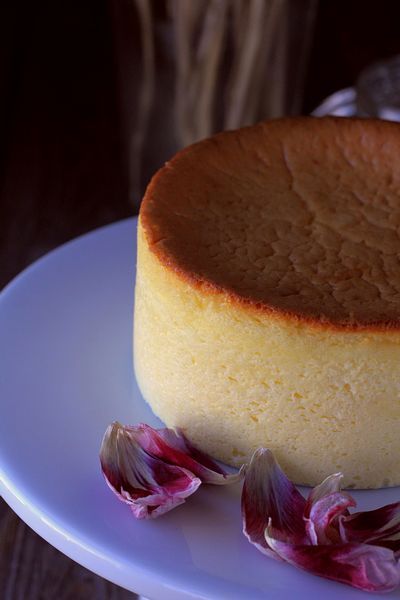
The "magic" about this cake that it perfectly combines "light" and "rich". The beaten whites makes the texture light as air, yet, there's only 11g of corn starch in the formula, comparing to 300g of cream cheese, which means the flavor is full on cheesy rich.

Like most Asian style cakes, it's only slightly sweet, which means it goes well with a thick blueberry sauce.

I declare it the best cheesecake I have tasted. Since it "feels" so light, we almost alway eat too much of it, so consider youself warned.
